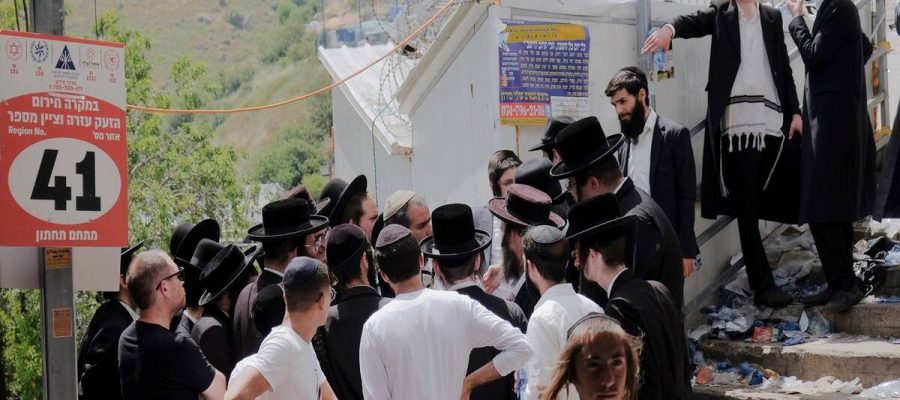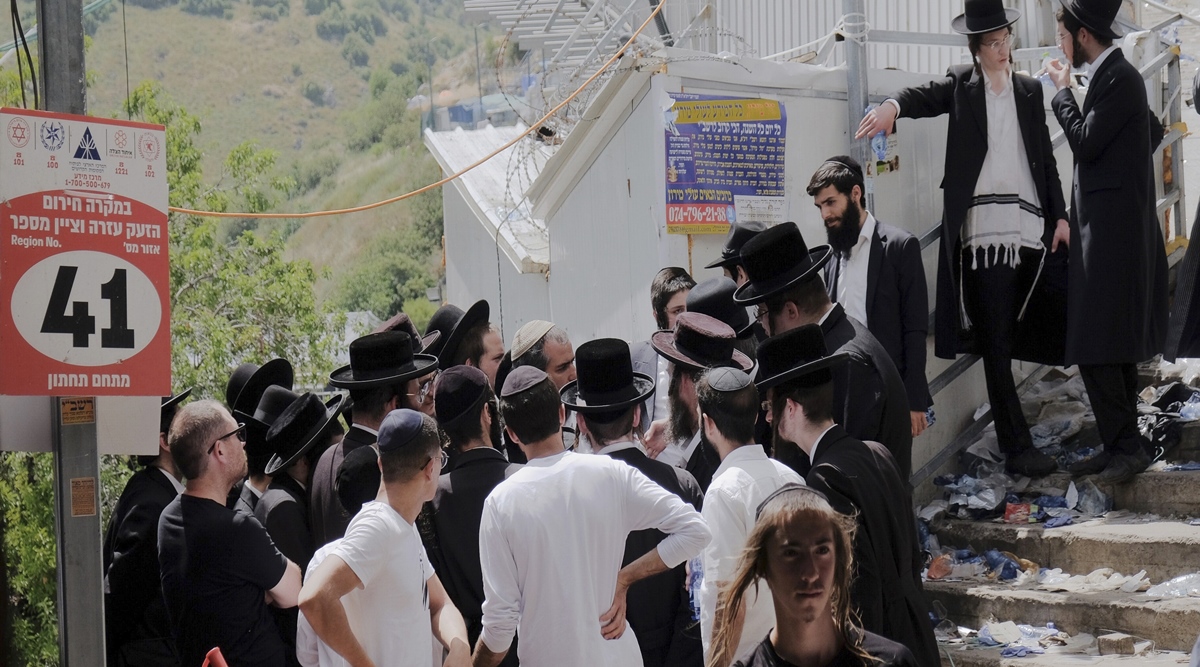Politicians and political commentators accused the police and other authorities of playing a part in the tragedy. One of those under scrutiny is the minister for public security, Amir Ohana, who oversees the police and rescue services and attended the pilgrimage himself.
Demands for accountability after a disaster that left 45 people dead at a holy site in northern Israel mounted Saturday as questions swirled about the culpability of the government, religious leaders and the police.
The stampede on Mount Meron early Friday during an annual pilgrimage, one of Israel’s worst civil disasters, was foreshadowed for years in warnings by local politicians, journalists and ombudsmen that the site had become a death trap.
On Saturday, the Israeli news media reported that senior police officials had blamed the Ministry of Religious Services because it had signed off earlier in the week on safety procedures for the event.
But a police spokesperson said that no additional precautions had been taken to secure the site since the stampede. Three police officers on duty at the mountain said they had received no instructions to limit crowds since the deaths Friday. Pilgrims who remained on the mountain continued to walk through the site of the stampede, which had not been cordoned off.
Politicians and political commentators accused the police and other authorities of playing a part in the tragedy. One of those under scrutiny is the minister for public security, Amir Ohana, who oversees the police and rescue services and attended the pilgrimage himself.
Successive Israeli governments were blamed for turning a blind eye to safety issues on the mountain for more than a decade to avoid alienating the ultra-Orthodox Jews who attend the annual celebration, known in Hebrew as a hillula. Seven of the last nine Israeli governing coalitions have relied on the support of ultra-Orthodox parties.
Referring to the minister for public security, Anshel Pfeffer, a political commentator and author, wrote in the liberal Israeli newspaper Haaretz, “Ohana would not have considered — not even for a minute — to restrict arrivals to the hillula at Meron and anger the ultra-Orthodox politicians who control the fate of his master, Prime Minister Benjamin Netanyahu.”
“But neither did his predecessors consider it,” he added.
Netanyahu is currently struggling to cobble together a new coalition government that will require the support of two ultra-Orthodox parties to have a chance of forming a parliamentary majority.
A senior police officer, Morris Chen, said Friday night that police protocols had not been influenced by political interference.
Ohana, the public security minister, posted on Twitter that police had done their best.
“There must be and will be a thorough, in-depth and real inquiry that will discover how and why this happened,” he later said in a video, adding, “From the bottom of my heart I wish to share in the sorrow of the families that lost the most precious thing of all, and to wish a swift and full recovery to the injured.”
The attorney general, Avichai Mandelblit, tasked an independent watchdog that investigates claims of police wrongdoing with assessing accusations of police negligence in the buildup to the disaster.
But Saturday, Kan, the state-run broadcaster, said that the watchdog was reluctant to oversee the investigation because of the roles played by other officials and bodies beyond the police.
Hundreds of thousands of ultra-Orthodox Jews visit Mount Meron each spring for the festival of Lag b’Omer. It honors the death of a second-century Jewish mystic, Rabbi Shimon Bar Yochai, whose tomb is on the mountain.
Crowds were banned in 2020, but about 100,000 returned this year after a successful vaccination drive that has allowed much of Israeli life to return to something approaching normalcy.
The event has long prompted calls to limit the number of pilgrims allowed to attend. The site is a warren of narrow, sloping passageways and small, cramped plazas that visitors have often warned were unsuitable for crowds.
The disaster began in the early hours of Friday morning as crowds gathered in a small arena beside the tomb to watch the lighting of several ceremonial bonfires. Thousands of people then tried to leave by way of a steep, narrow slope that eventually connects, via a short bank of steps, to a narrow tunnel.
As they neared the steps to the tunnel, some at the front slipped on the metal floor of the slope, witnesses said. That created a sudden blockage, trapping hundreds at the bottom. As more and more pilgrims continued to leave the ceremony above, they began trampling on those below them.
In 2008 and 2011, the state comptroller, a government watchdog, warned that the site’s pathways were too narrow to accommodate so many people. The local council leader said that he had tried to close it at least three times.
In 2013, the police chief of northern Israel warned colleagues of the potential for a deadly accident. And in 2018, the editor of a major Haredi magazine said it was a recipe for disaster.
On Friday night, a current representative of the state comptroller said that the lack of a coherent leadership structure at the site made it harder to enforce a proper safety system there.
Different parts of the site fall under the jurisdiction of four competing private religious institutions, all of which resist state intervention.
There was “one main fault,” Liora Shimon, deputy director general at the comptroller, told Kan. “It is the fact that this site is not under the responsibility of one single management.”
A survivor of the tragedy, Yossi Amsalem, 38, said that chaotic site management had contributed to the crush, but stopped short of attributing blame to any particular group. Amsalem said that the passageway where the crush occurred had been used for two-way traffic, which had made it even harder to move.
“The path should either be for going up or going down,” Amsalem said from a hospital bed in Safed, a city across the valley from Meron. “There shouldn’t be this confusion.”
The tragedy drew sympathy and solidarity from across the religious-secular divide in Israel. Health workers said that 2,200 Israelis had donated blood to help those injured on Mount Meron. Flags will be flown at half-staff Sunday at official state buildings as the country observes a day of national mourning.
But the catastrophe also reignited a debate about religious-secular tensions in Israel, and about the amount of autonomy that should be granted to parts of the ultra-Orthodox community that resist state control.
While many ultra-Orthodox Jews play active roles in Israeli life, some reject the concept of Zionism, while others reject participation in the Israeli military or workforce and resist state intervention in their education system.
The tensions soared during the pandemic, when parts of the community infuriated the secular public by ignoring state-enforced coronavirus regulations, even as the disease devastated their ranks at a far higher rate than the rest of the population.
For survivors of the Meron disaster, the crush therefore became the latest in a series of struggles and setbacks, instead of a joyous post-pandemic return to normalcy and tradition.
“It’s been such a difficult year,” said Moshe Helfgot, a 22-year-old whose right leg was broken in two places in the crush. “And now there is yet another disaster.”
Source: Read Full Article


